Everyone I know who’s been to Ho Chi Minh City has crawled through the Cu Chi Tunnels. It’s one of the most visited tourist attractions in Southern Vietnam.
The first time I heard about tourists crawling through these tunnels was almost twenty years ago when my sister and brother were traveling through Vietnam. The country had just opened its doors to foreign tourism so many attractions were still raw and undeveloped.
I’ll never forget how she described what it was like going through these tunnels. As if crawling on your hands and knees through a suffocatingly tight space weren’t panic-inducing enough, she looked up and saw the ceiling absolutely smothered in cockroaches. Antennas waving just inches from her head, she nearly had a meltdown.
The funny thing is, as mortified as she was, she had to keep her composure and get through that tunnel as quickly but as quietly as possible, so as not to disturb the roaches. Doing so would have sent them into a frenzy and all over that crawling conga line of unsuspecting tourists.
Thankfully, tourism has come a long way in Vietnam since then. They’ve managed to keep roaches away from these tunnels which have become one of the most iconic attractions not just in Saigon, but in all of Vietnam. If you’ll be spending any time in Southern Vietnam, then this is something you need to do.
Save This on Pinterest!
No time to read this now? Click on the red save button and pin it for later!
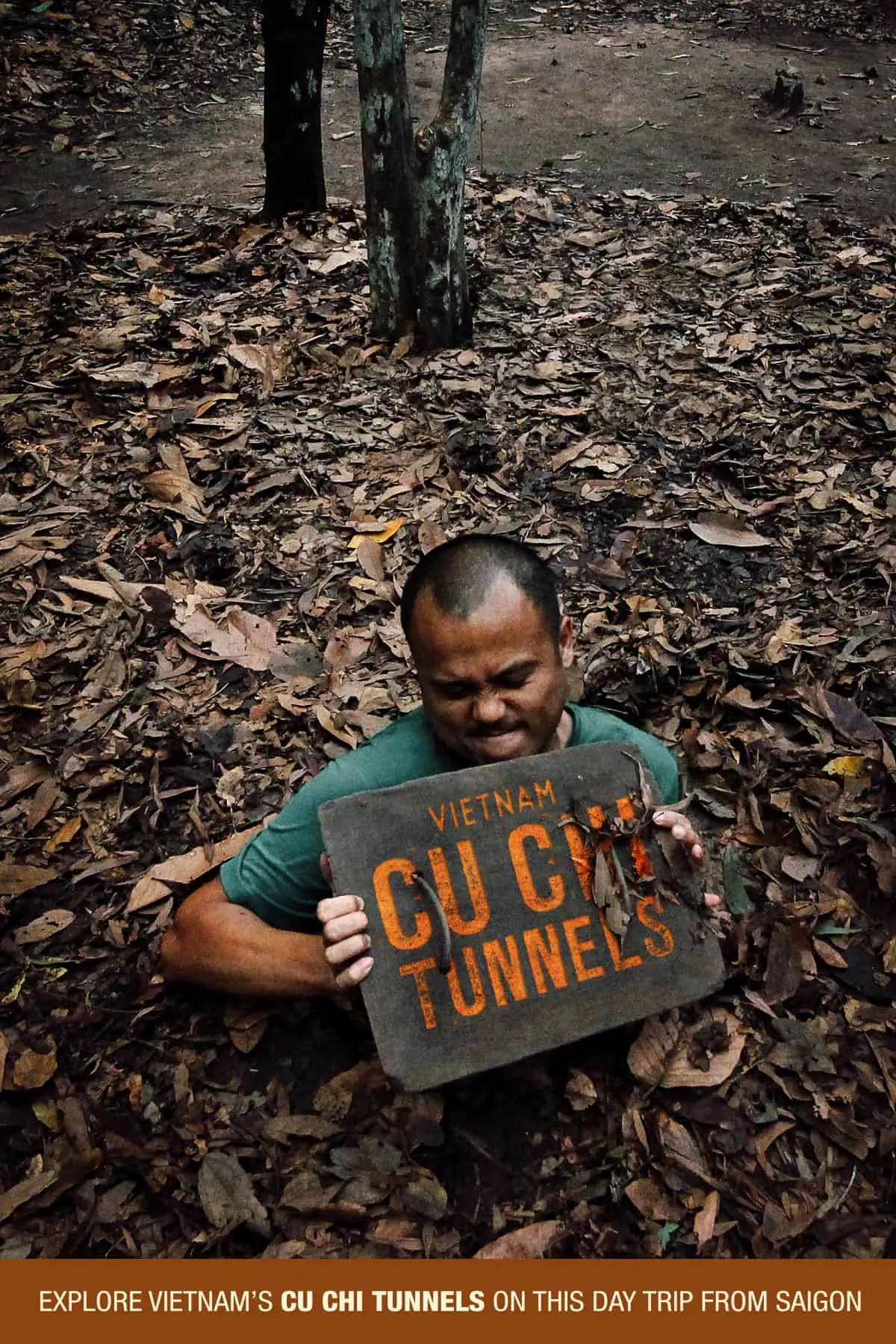
Cu Chi Jungle
Cu Chi District is about an hour northwest of Saigon. It served as the headquarters of the Viet Cong during the Vietnam War.
Cu Chi Tunnel tours are popular so many tour operators offer them. You’ll find several on Get Your Guide alone. This Cu Chi Tunnels: Morning or Afternoon Guided Tour starts at just USD 18 per person and is by far their most popular.
After showing everyone a quick video about the Vietnam War, guides will take groups through a curated tour of the jungle. It was very organized and flowed smoothly in spite of the large number of tour groups. Here’s our guide Huy showing us a replica of one of the booby traps used during the war.
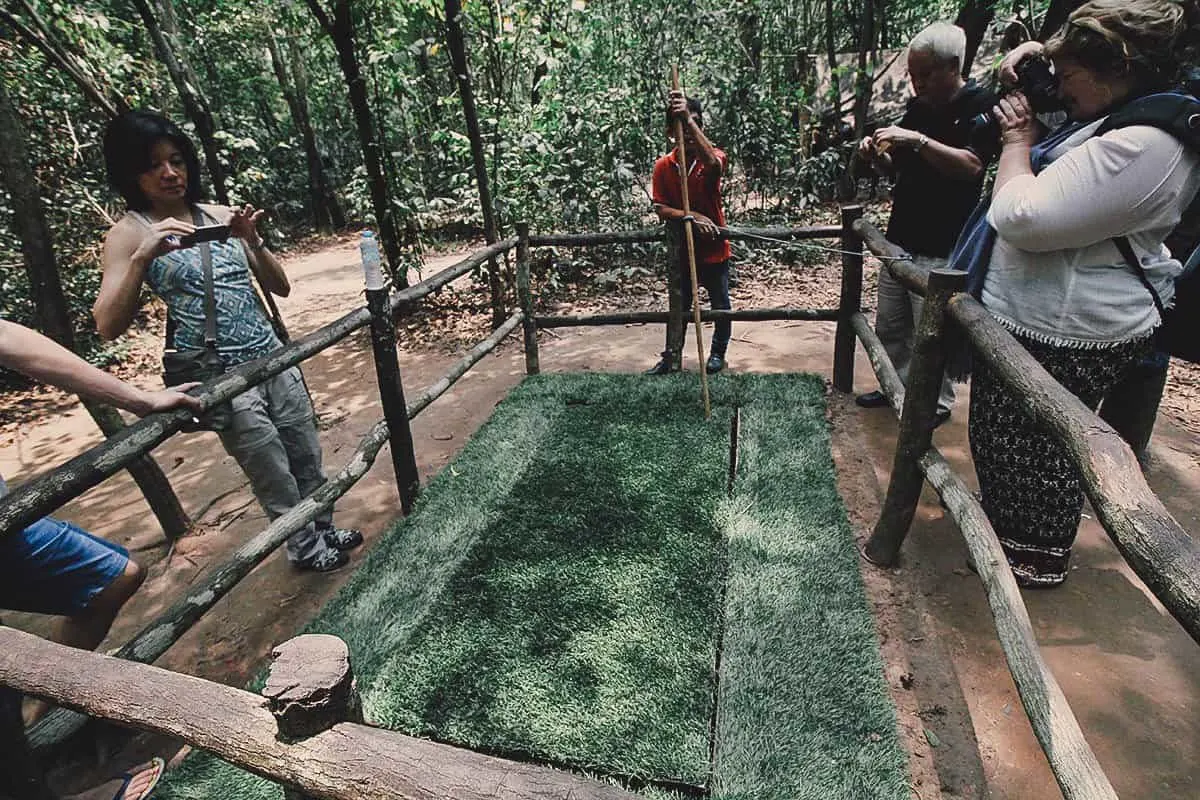
Flip, and bang! You’re spiked.
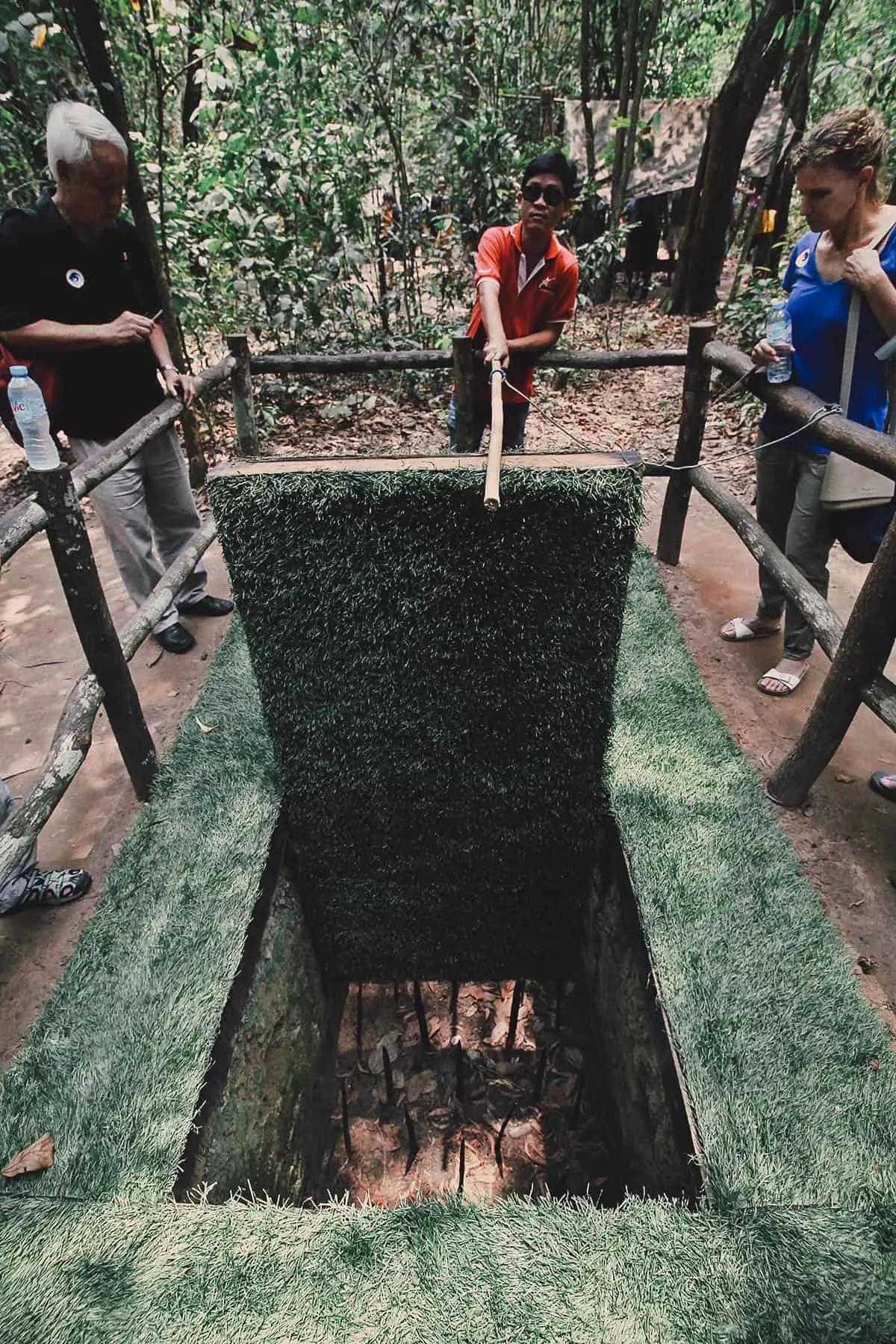
Huy said that the spikes often weren’t enough to kill American soldiers so the Viet Cong would fill these pits with animal manure to infect the wounds. Lovely.
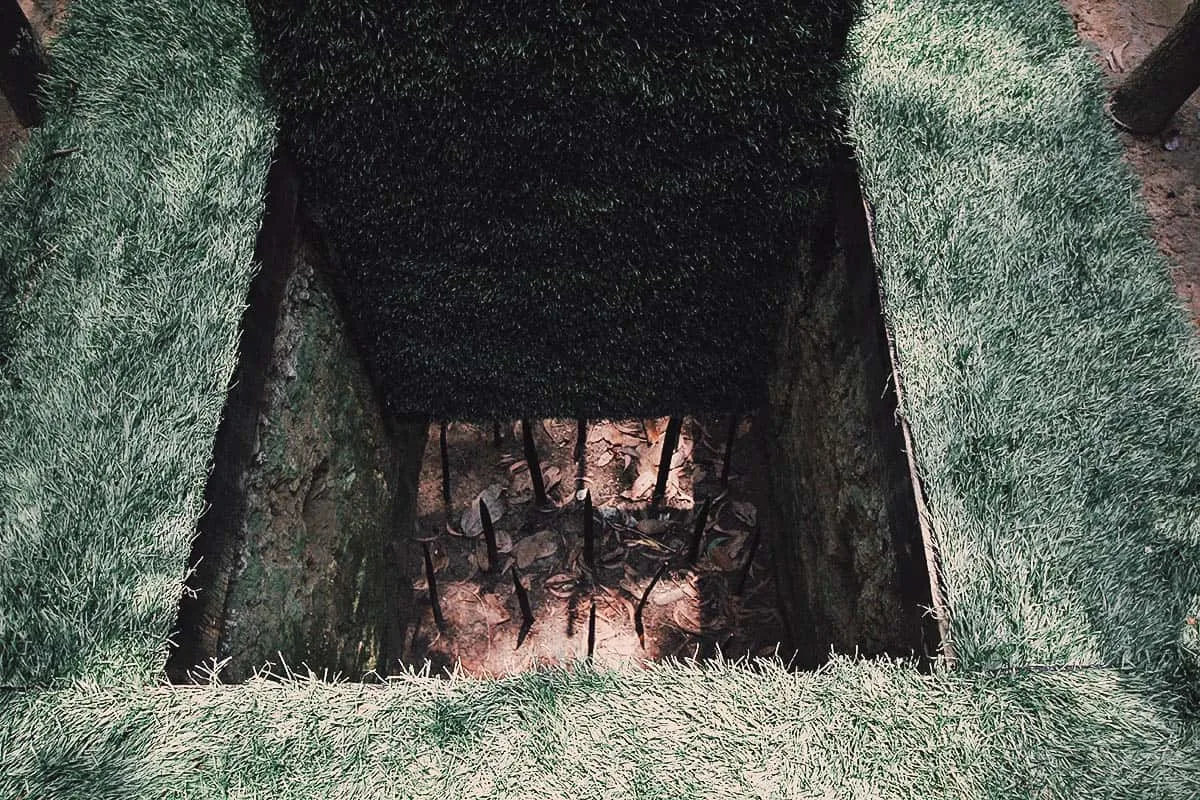
Nearly everyone who’s been to Cu Chi has a picture of themselves inside these holes and holding up the lid. According to Huy, this entrance to the tunnel system was close to actual size.
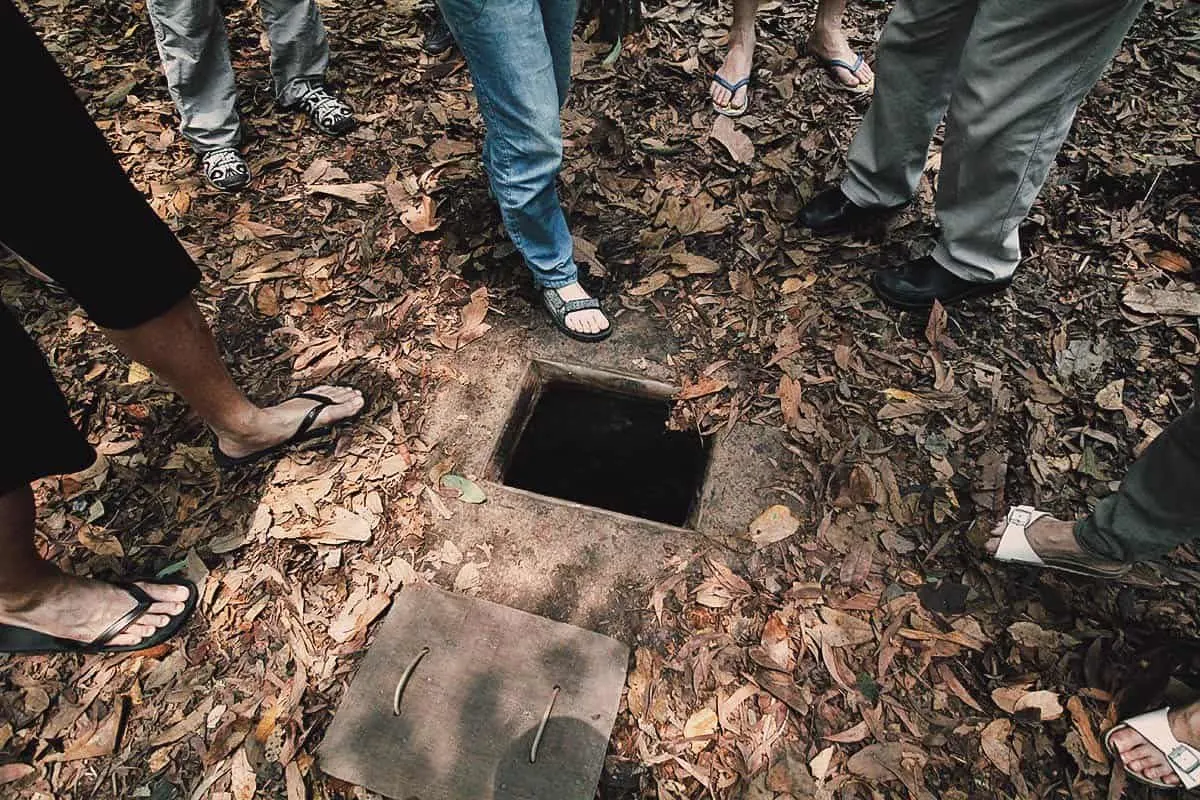
Cliched as it was, I couldn’t visit Cu Chi without this popular shot.
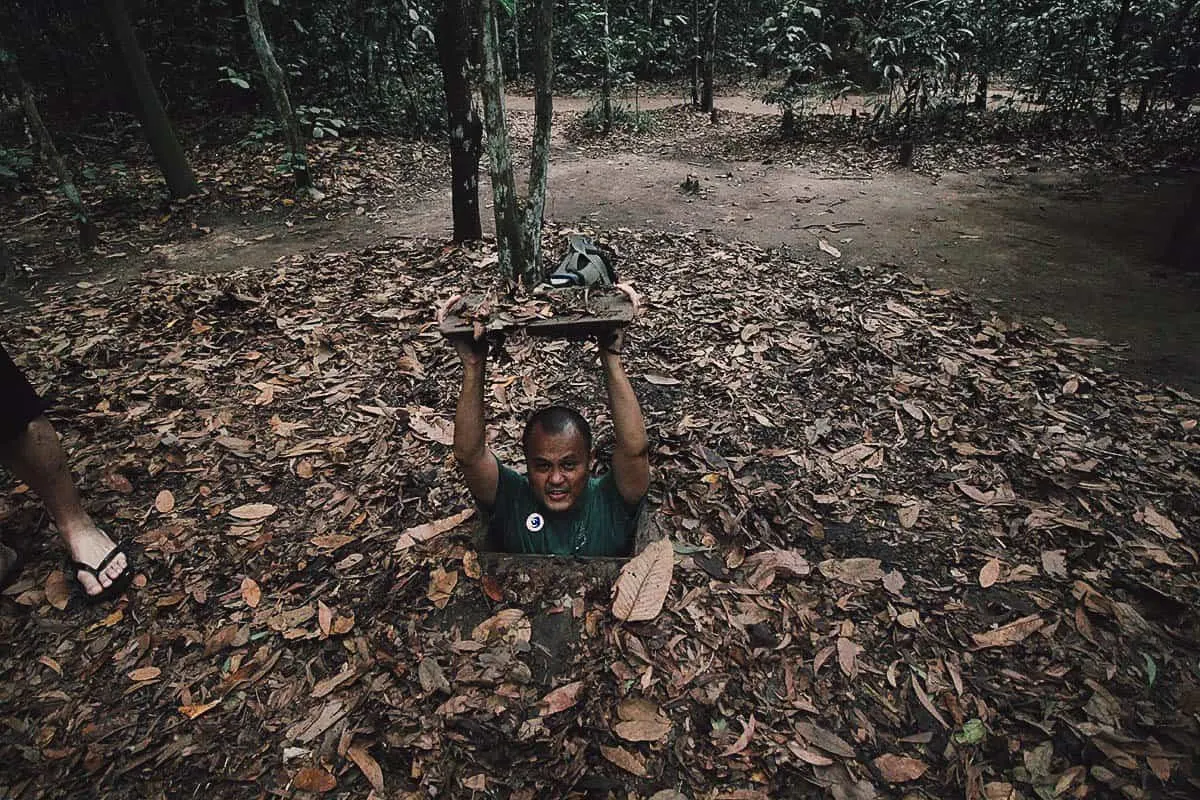
I went all the way inside the hole and had trouble getting out. It was a seriously tight squeeze!
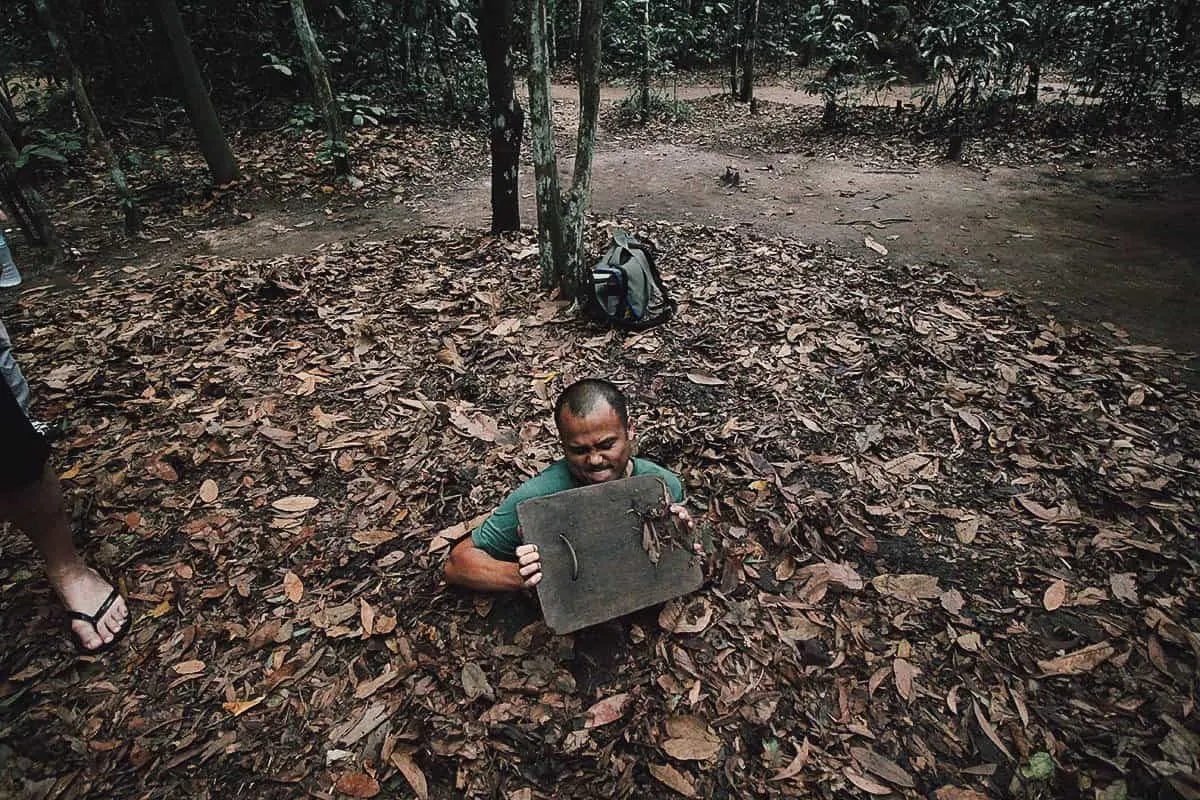
Different entrances to the tunnel system. During the war, this complex of tunnels grew to house entire underground villages with living quarters, kitchens, ordinance factories, hospitals, and bomb shelters.
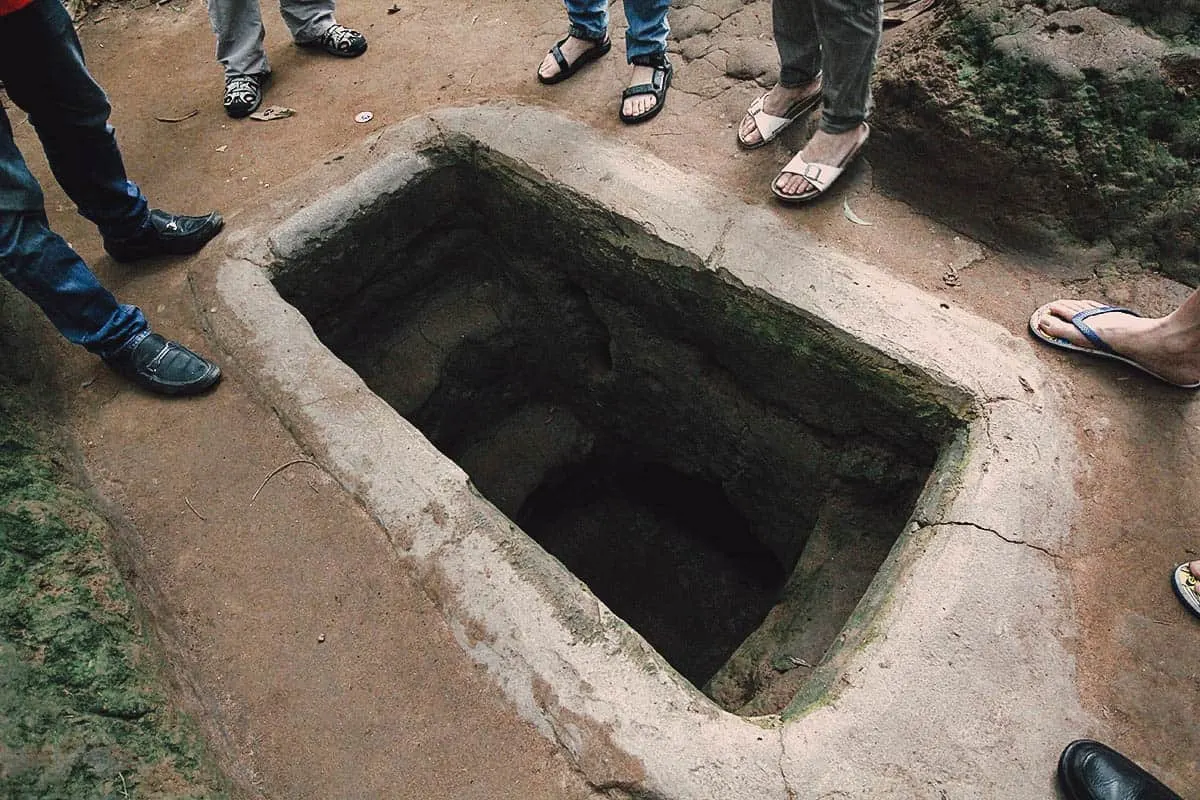
The Cu Chi Tunnels go several levels deep and is about 121 km long. Life in the tunnels was difficult for the Viet Cong. Air, food, and water were scarce and the tunnels were infested with insects and vermin like ants, cockroaches, spiders, rats, and snakes. Sickness was rampant, especially malaria which was the second biggest cause of death after battle wounds. A captured Viet Cong report suggested that everyone living in the tunnel system was infected with intestinal parasites.
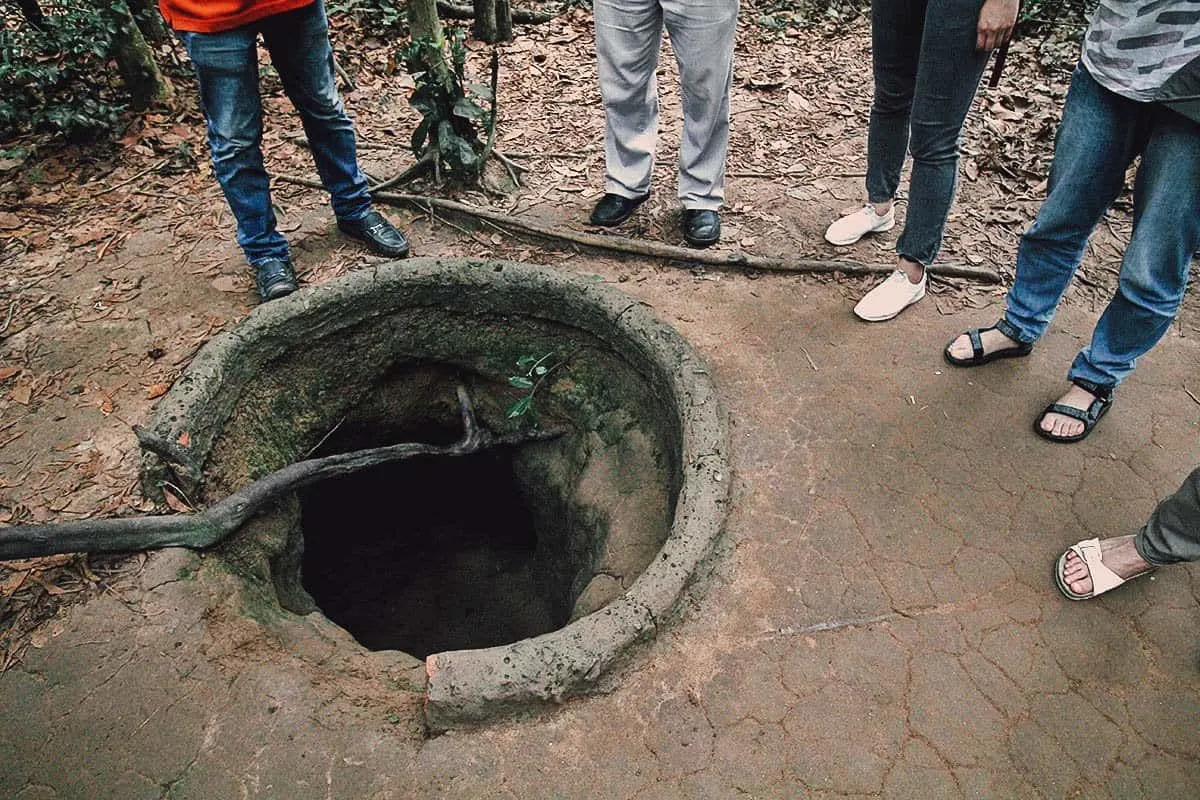
I thought this was really cool. See those holes in the termite mound? The Viet Cong would take abandoned termite mounds and convert them into air vents. The problem was, American soldiers could identify these converted mounds with the aid of sniffing dogs. To hide their scent, the Viet Cong would steal the Amercians’ dirty laundry, soap, aftershave, etc and rub it all over these holes to fool the dogs. Ingenious eh?
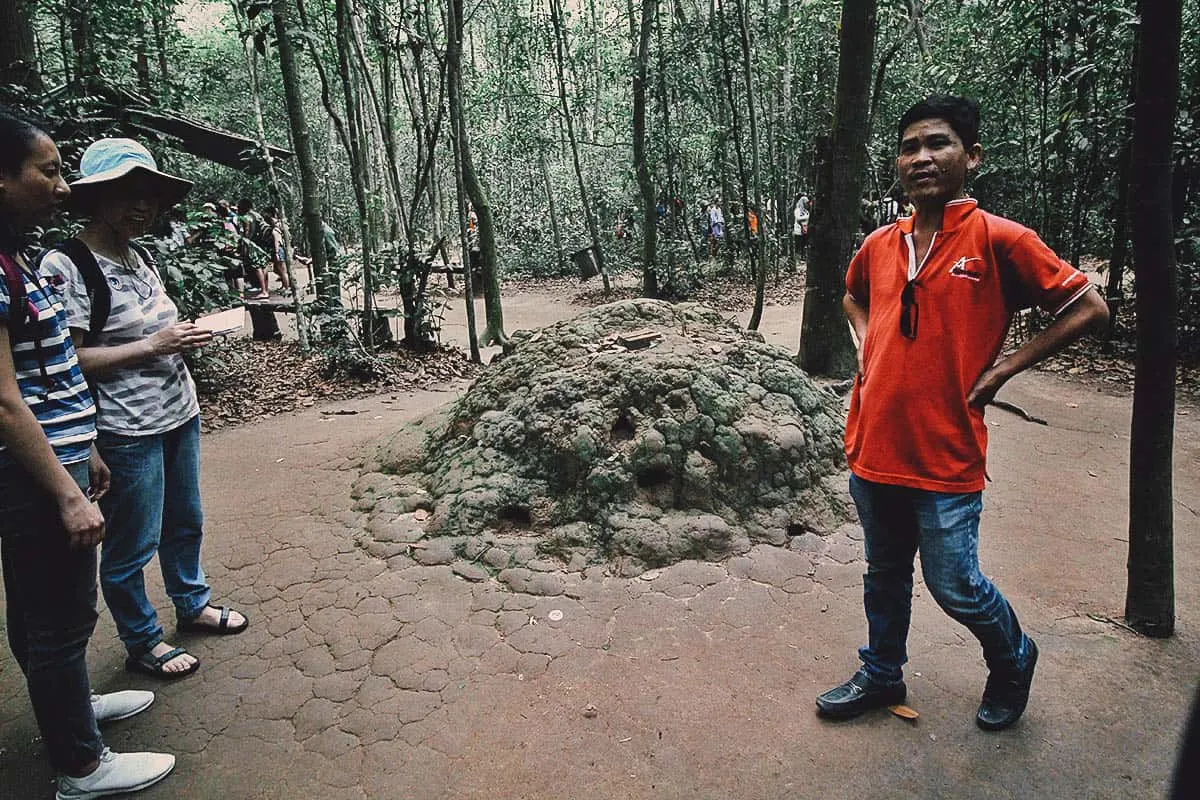
This was an actual American tank destroyed during the war. The Viet Cong blew it up using anti-tank mines, killing all the soldiers inside. If I remember correctly, this was the exact spot where it was destroyed.
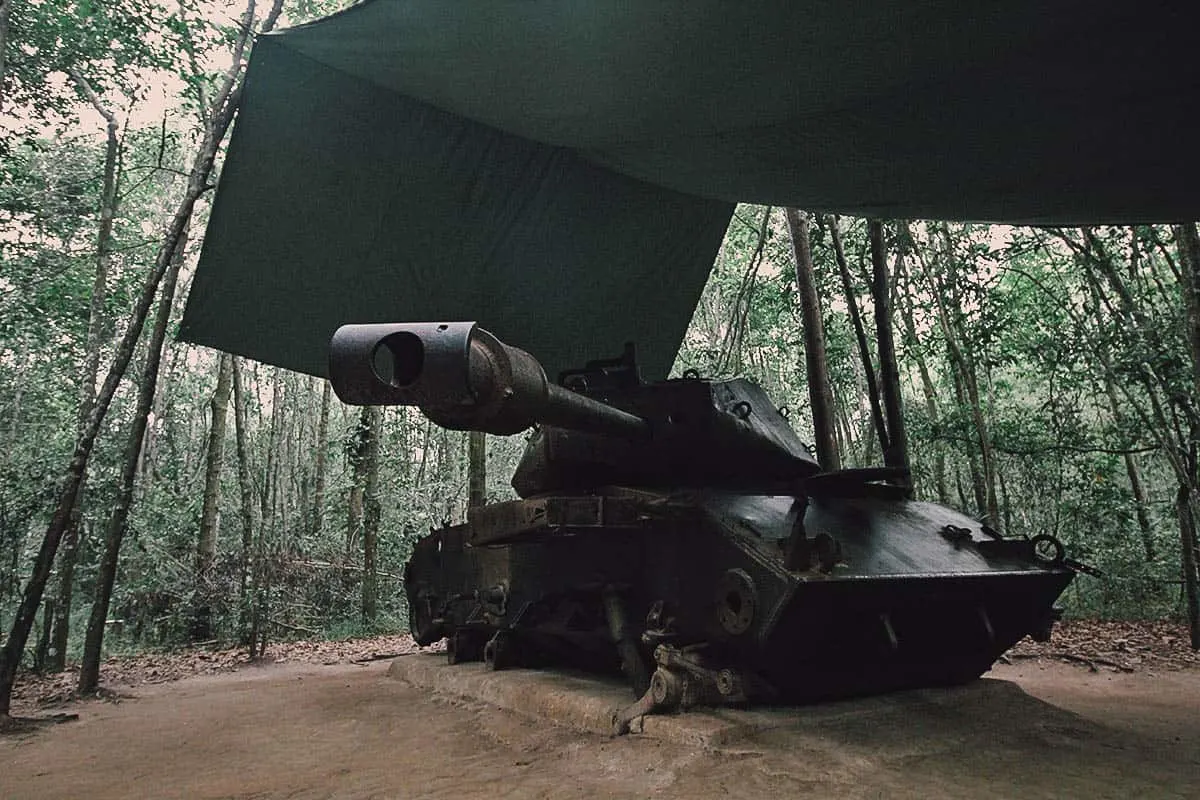
They showed us different types of booby traps and how they worked.
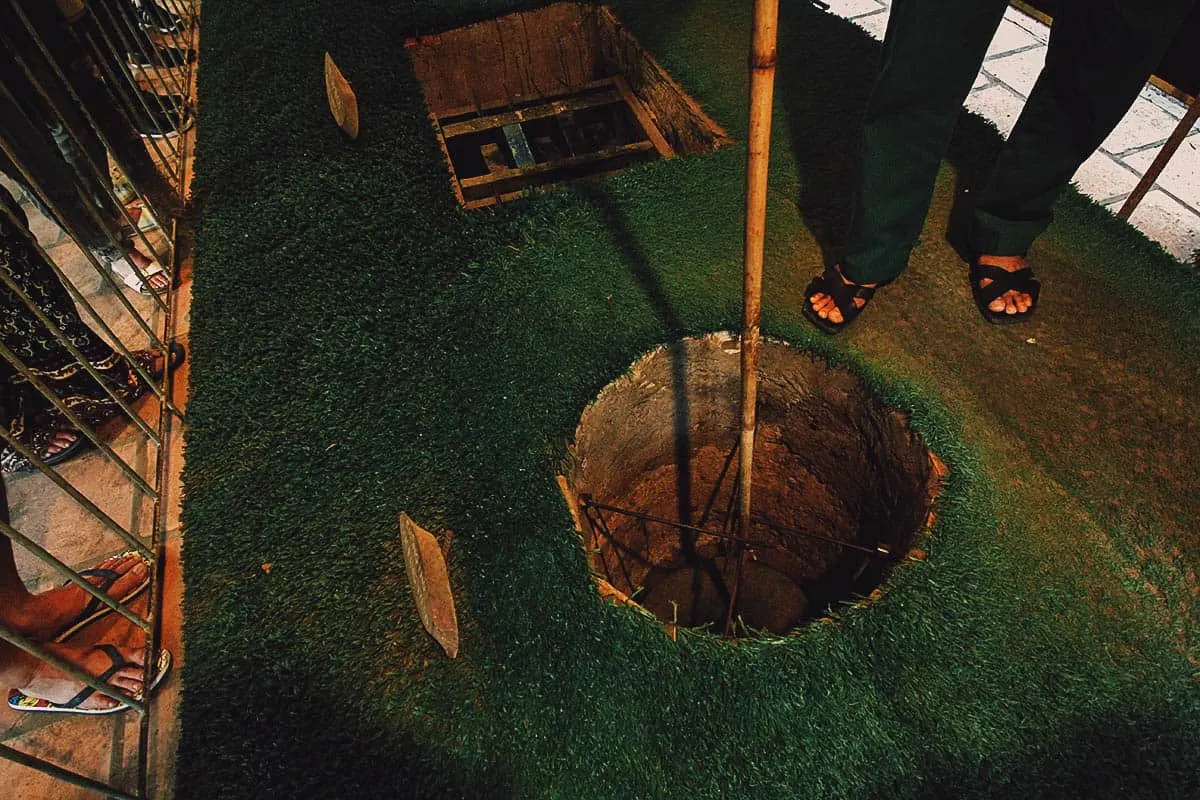
Ironically, many of these traps were made using scraps from destroyed American artillery like bombs and tanks.
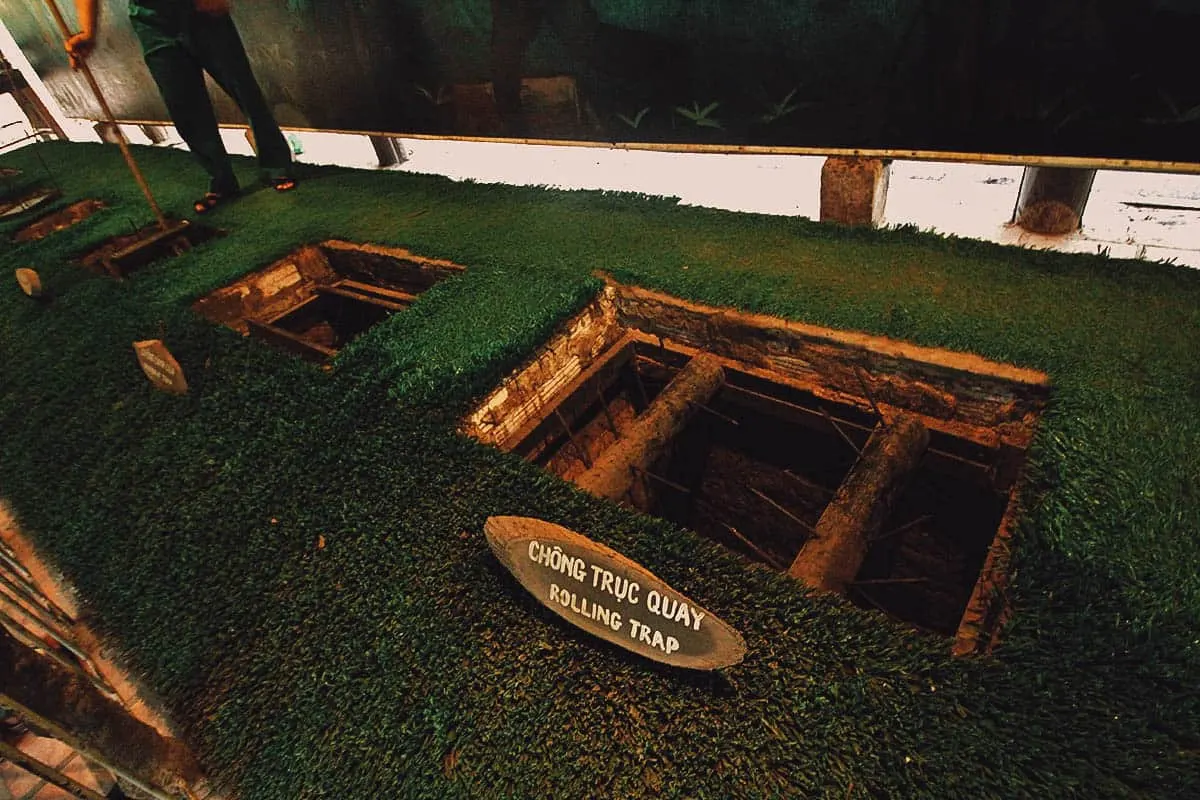
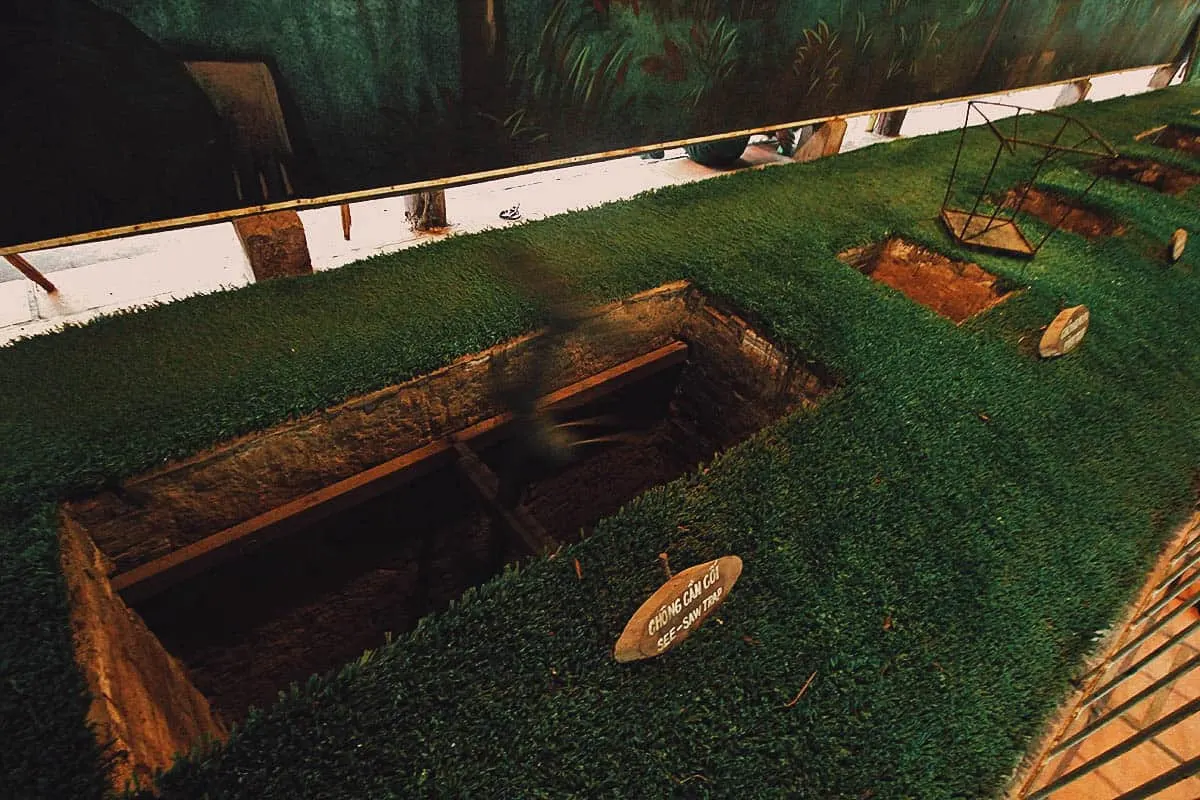
Huy pointed to the base of this tree and asked us if we noticed anything unusual. When no one saw anything, he said “Bang! You’re all dead”.
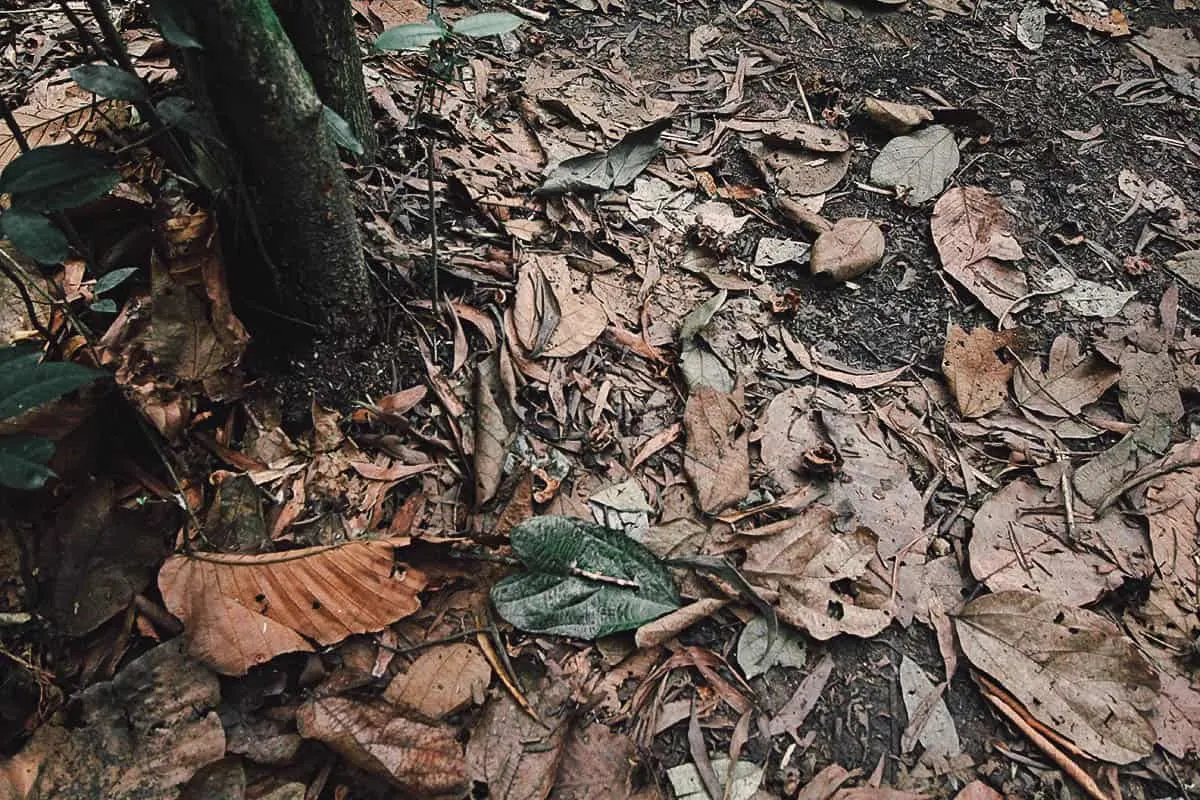
That leaf with the twig through it was the Viet Cong’s way of letting each other know that a land mine was planted here.
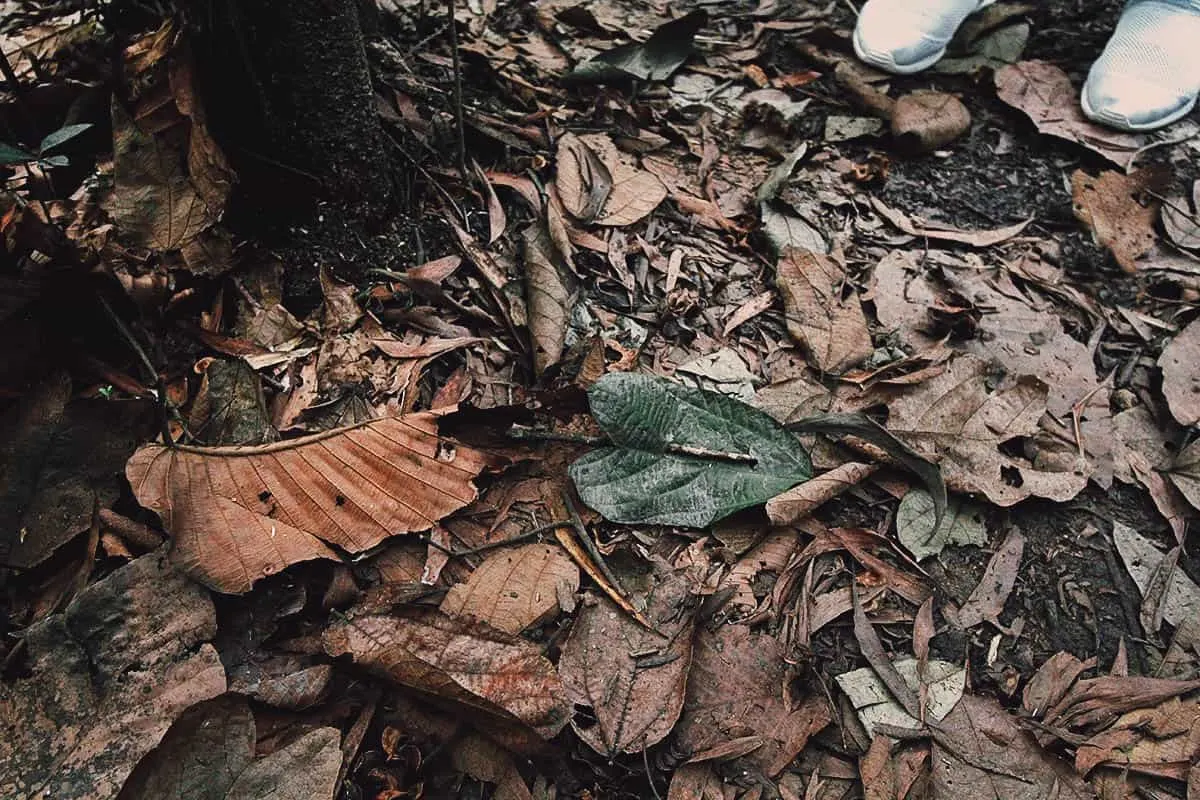
This was my favorite part of the tour and something I looked forward to. This was the firing range and for an extra VND 50,000 per bullet, you could fire weapons used during the war.
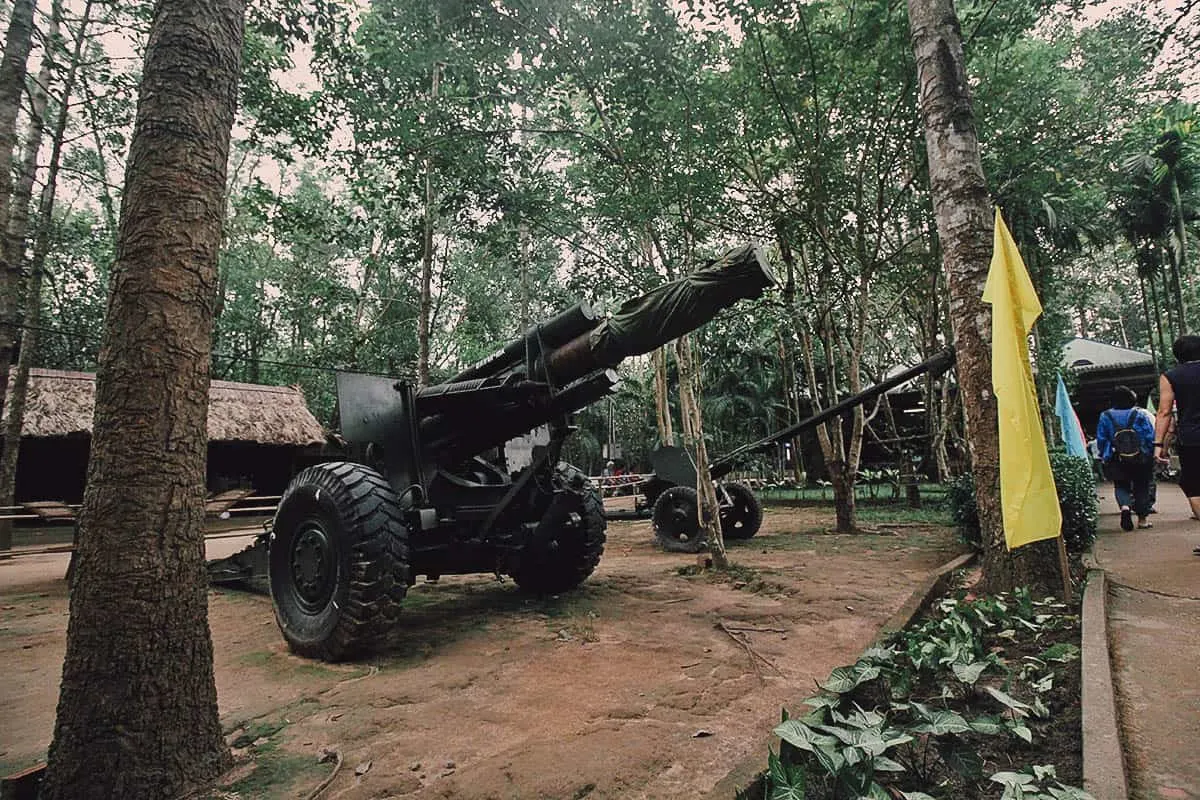
I don’t know what this was but it was a big ass gun.
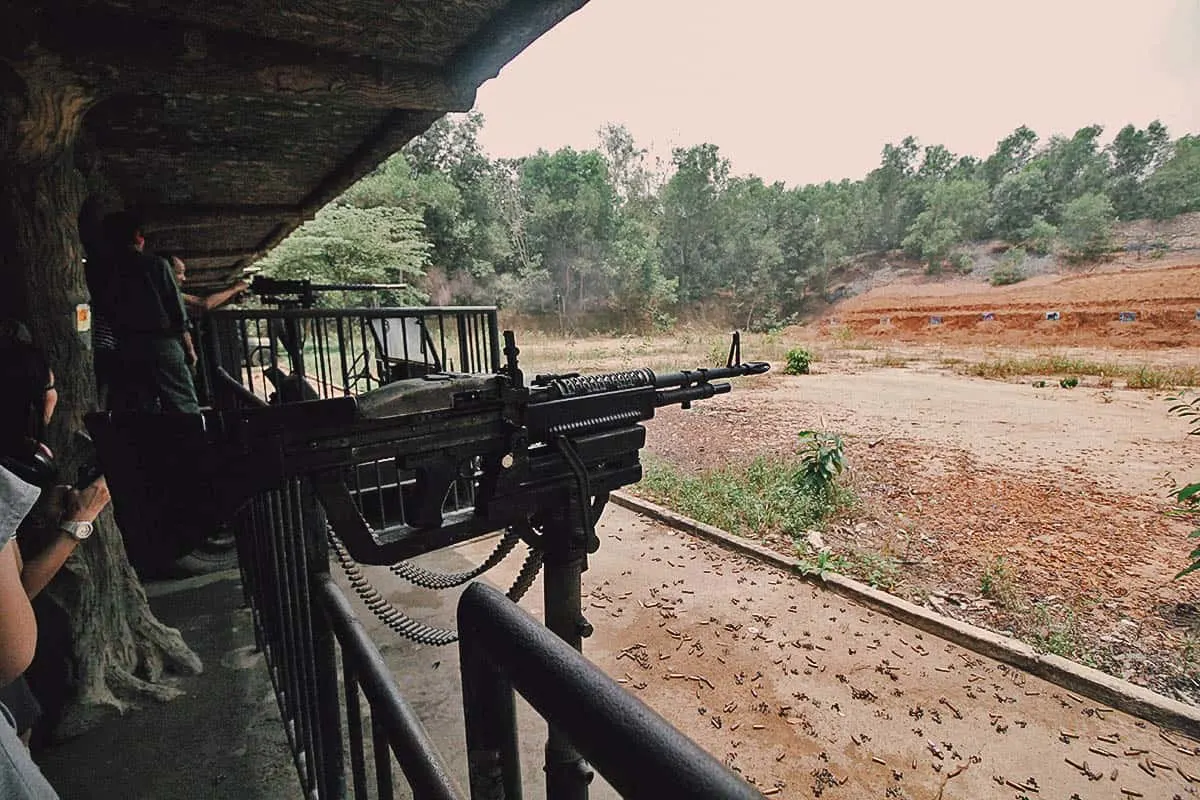
Here’s an even bigger one mounted on a jeep.
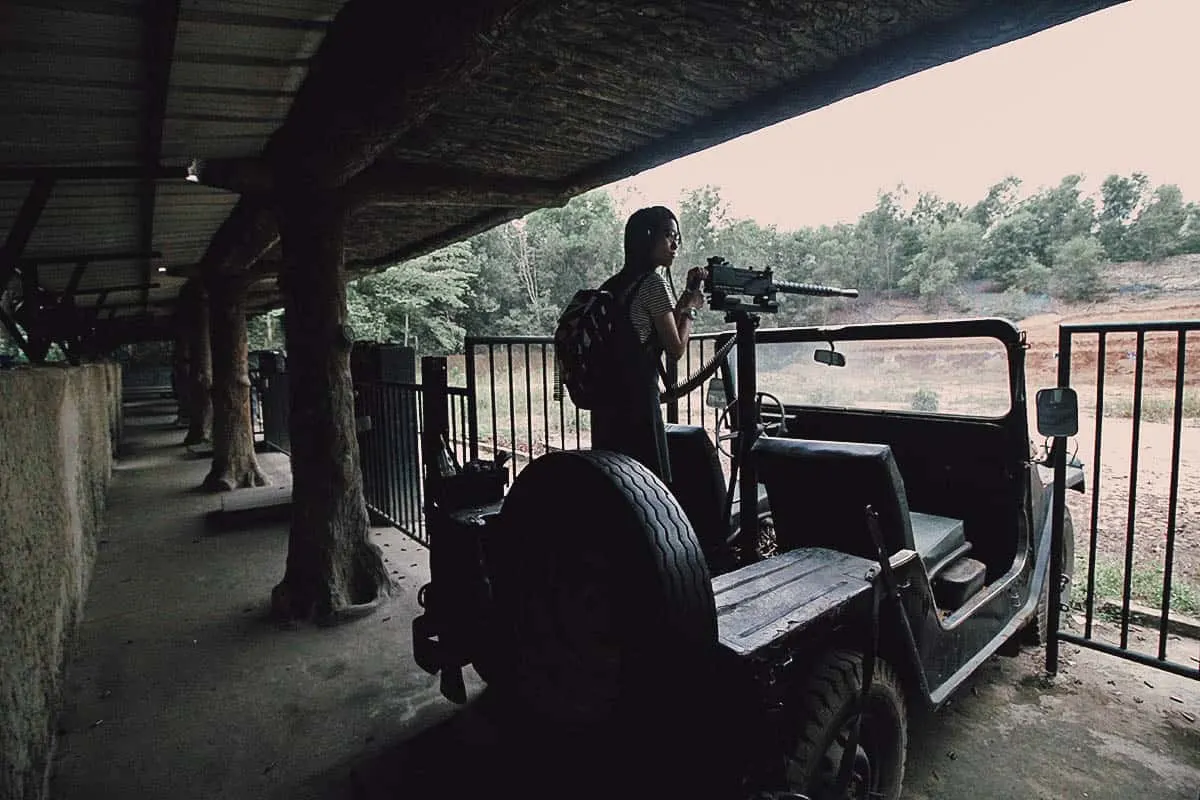
The cheapest to fire were AK-47s for VND 50,000 per bullet, and you had to fire a minimum of 10. VND 500,000 isn’t cheap but I had never shot an AK-47 before so I couldn’t pass up on the opportunity.
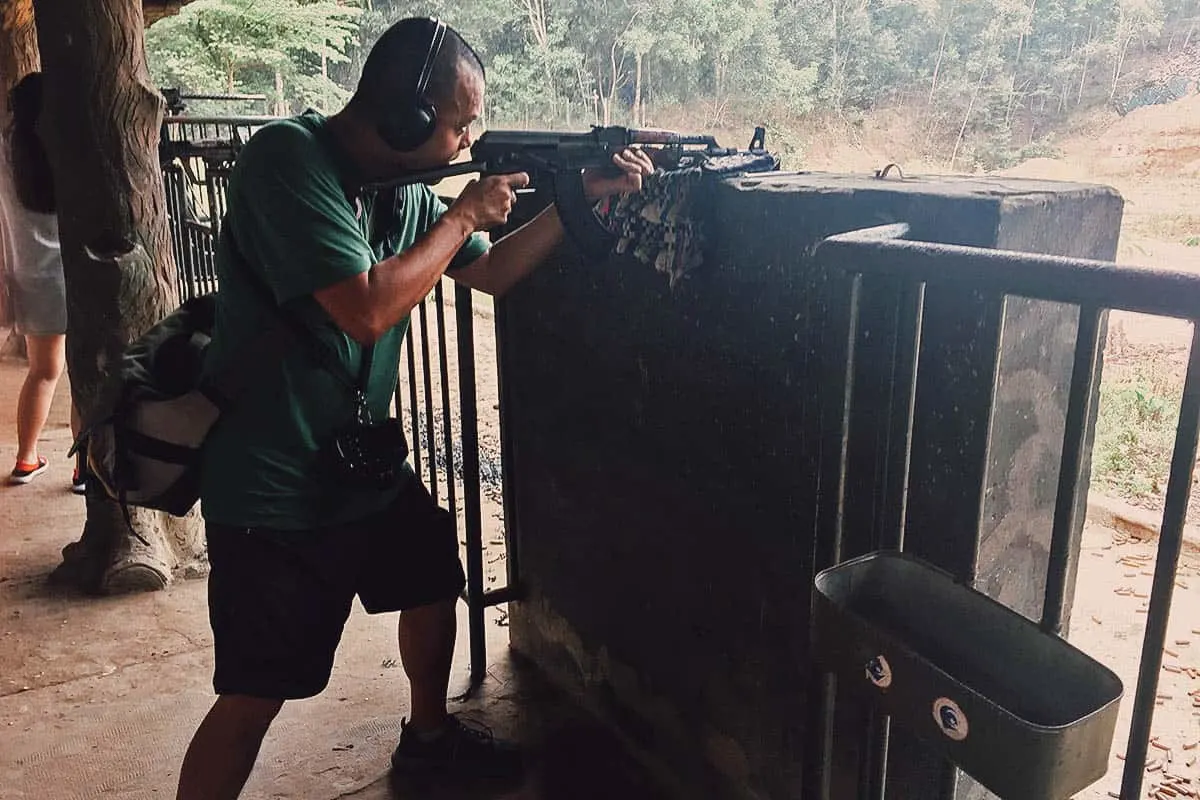
The sound of these rifles was deafening! All guns were bolted to the rock to prevent any loons from going postal and shooting everyone up.
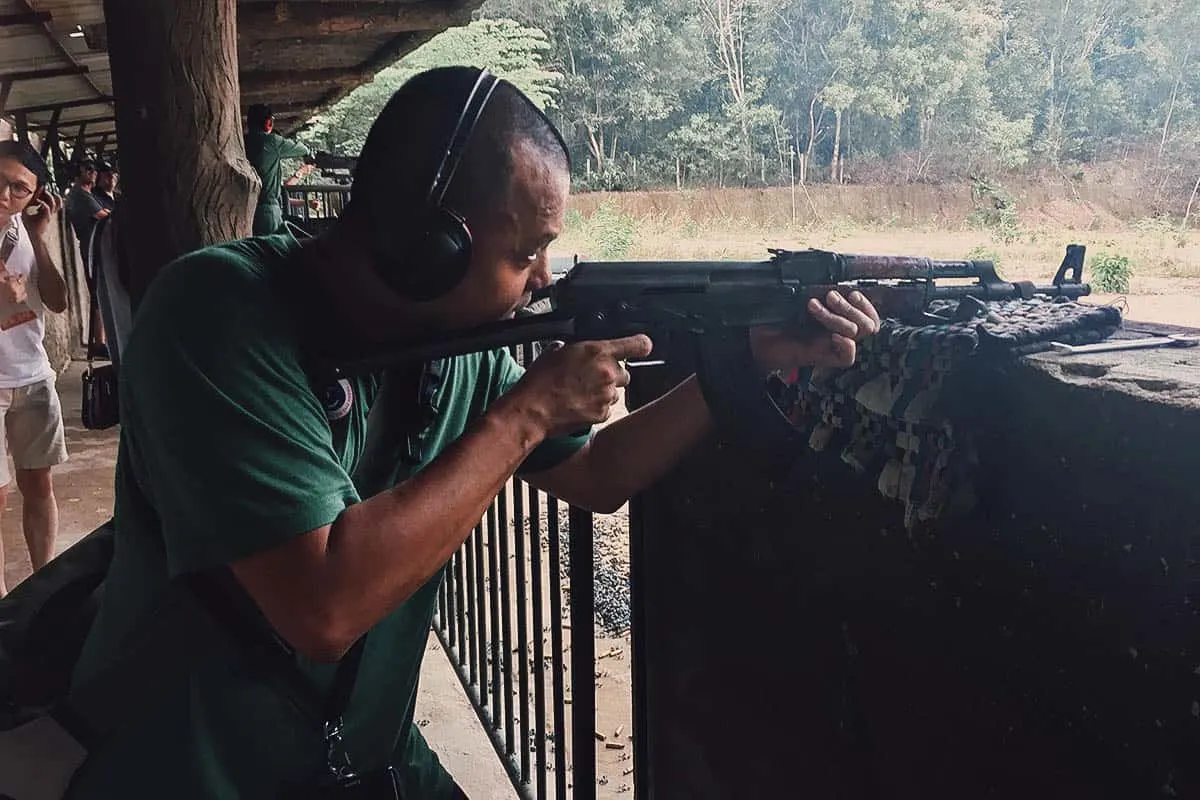
I’m not sure if I hit the target at all but it was fun. 😆
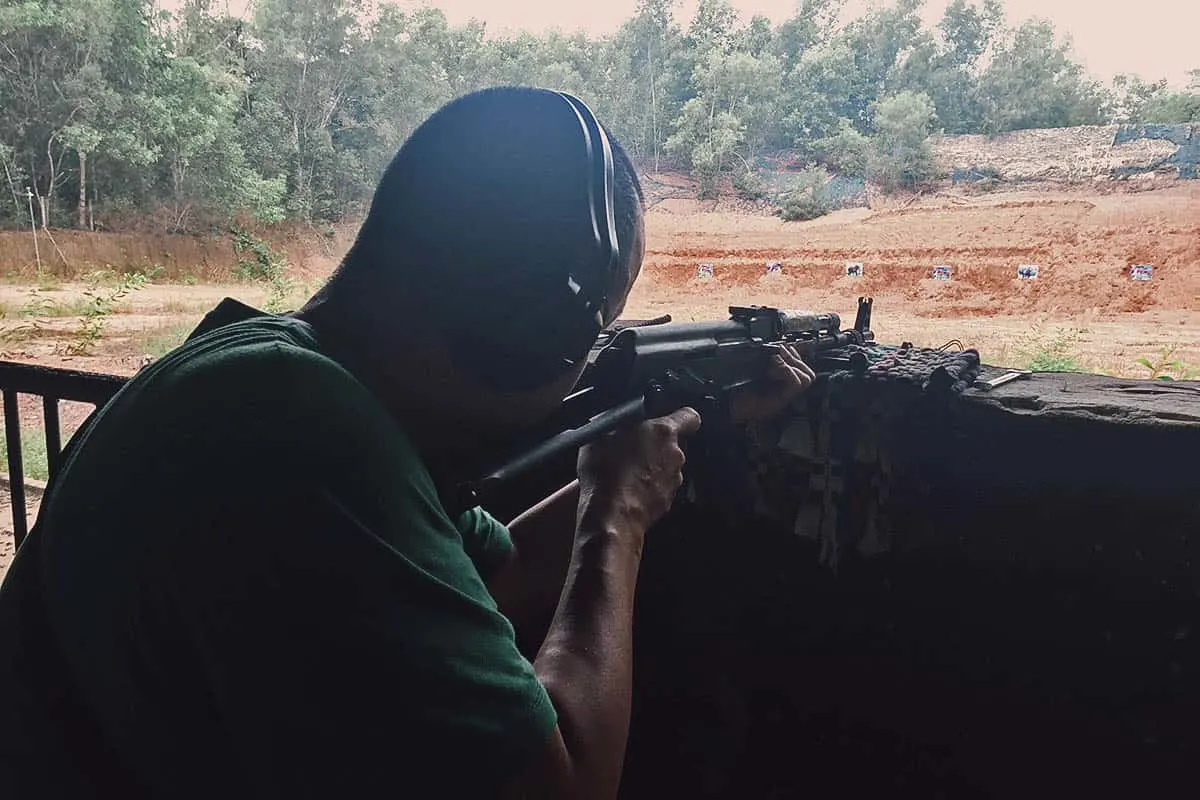
Showing us how Vietnamese rice paper is made
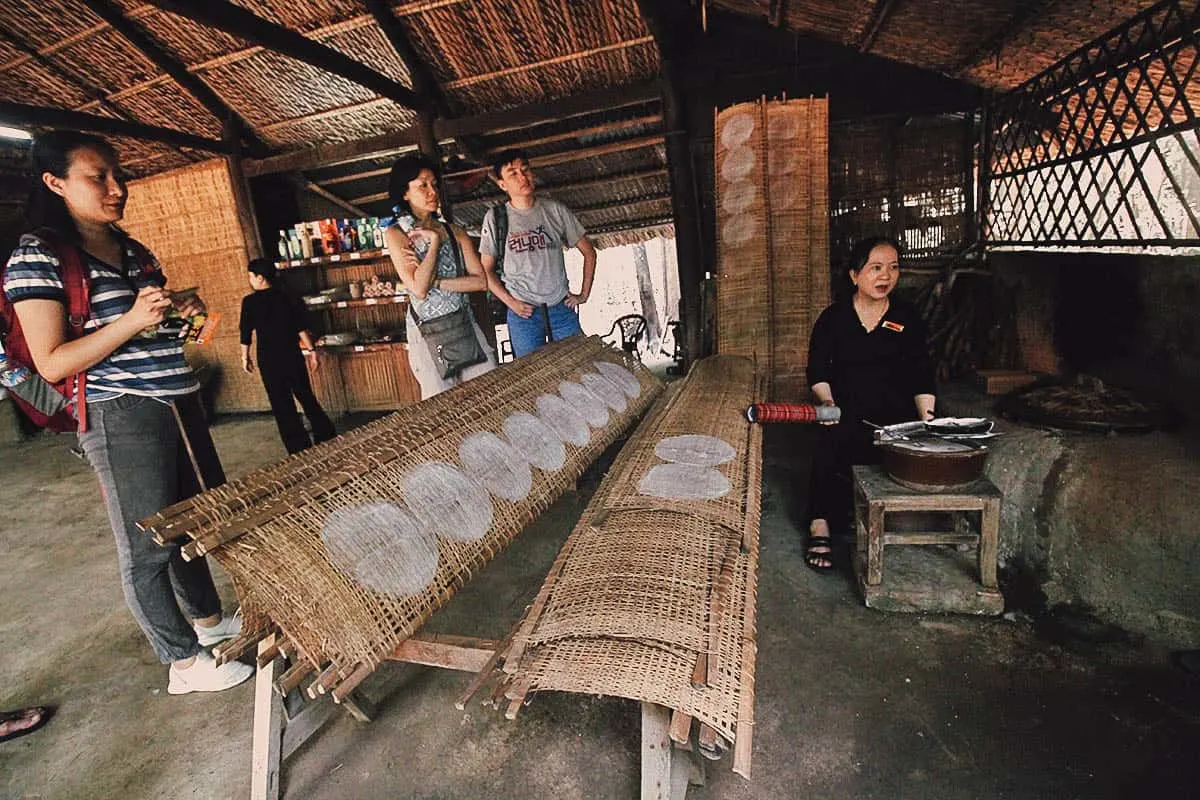
The jungle was pleasant but very humid so you may want to bring a face towel.
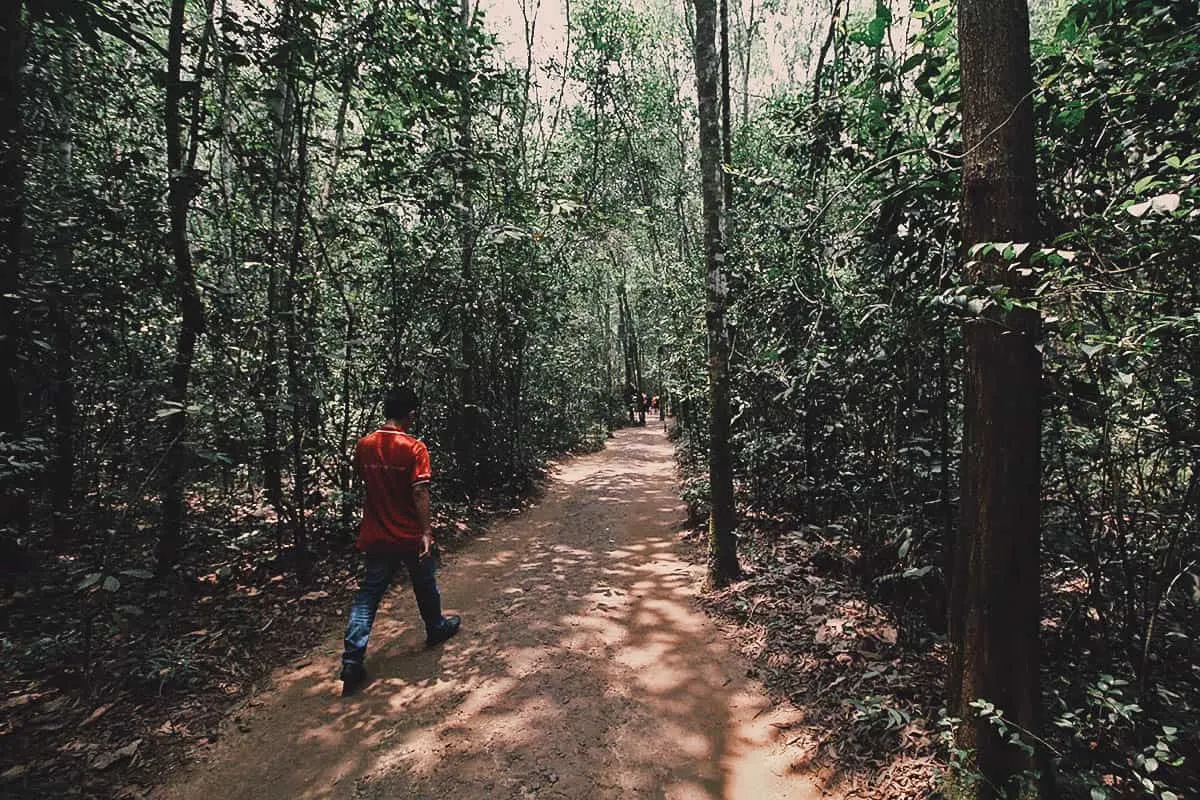
A life-sized diorama showing how these tunnels were dug up
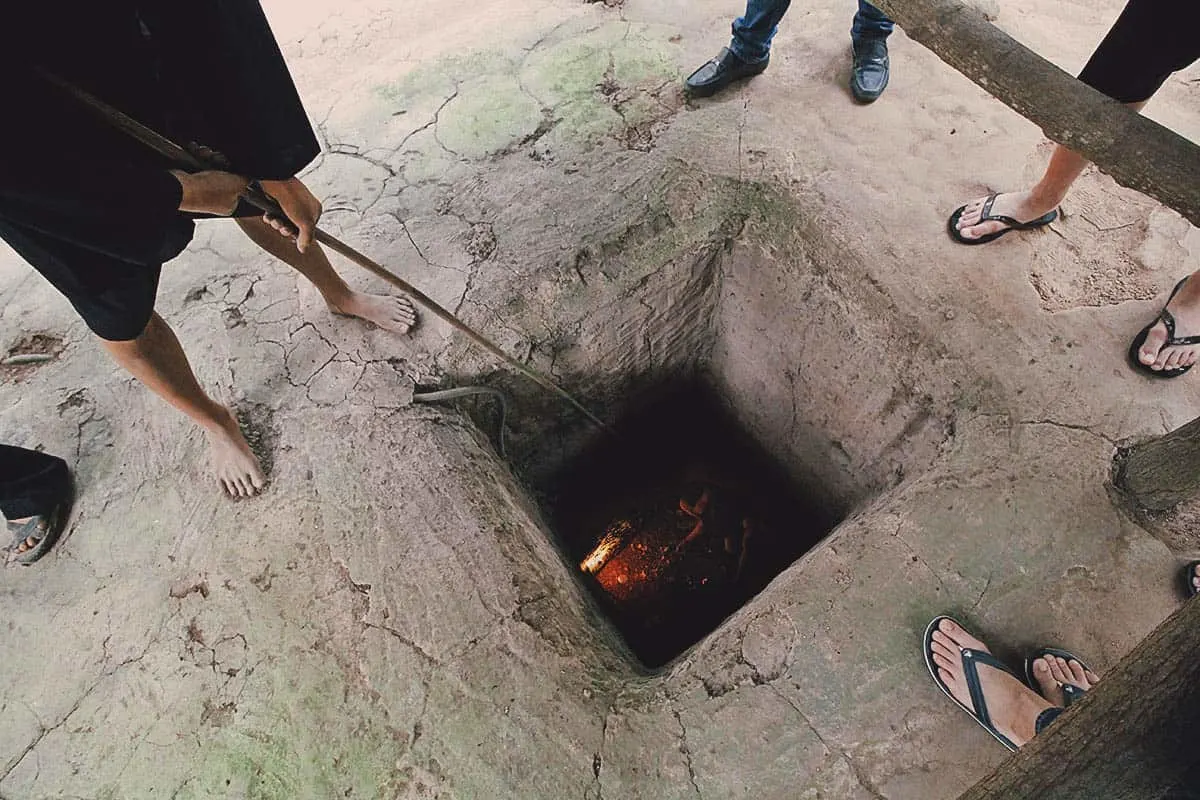
Even discarded tank treads were put to good use. The Viet Cong used them to make rubber slippers.
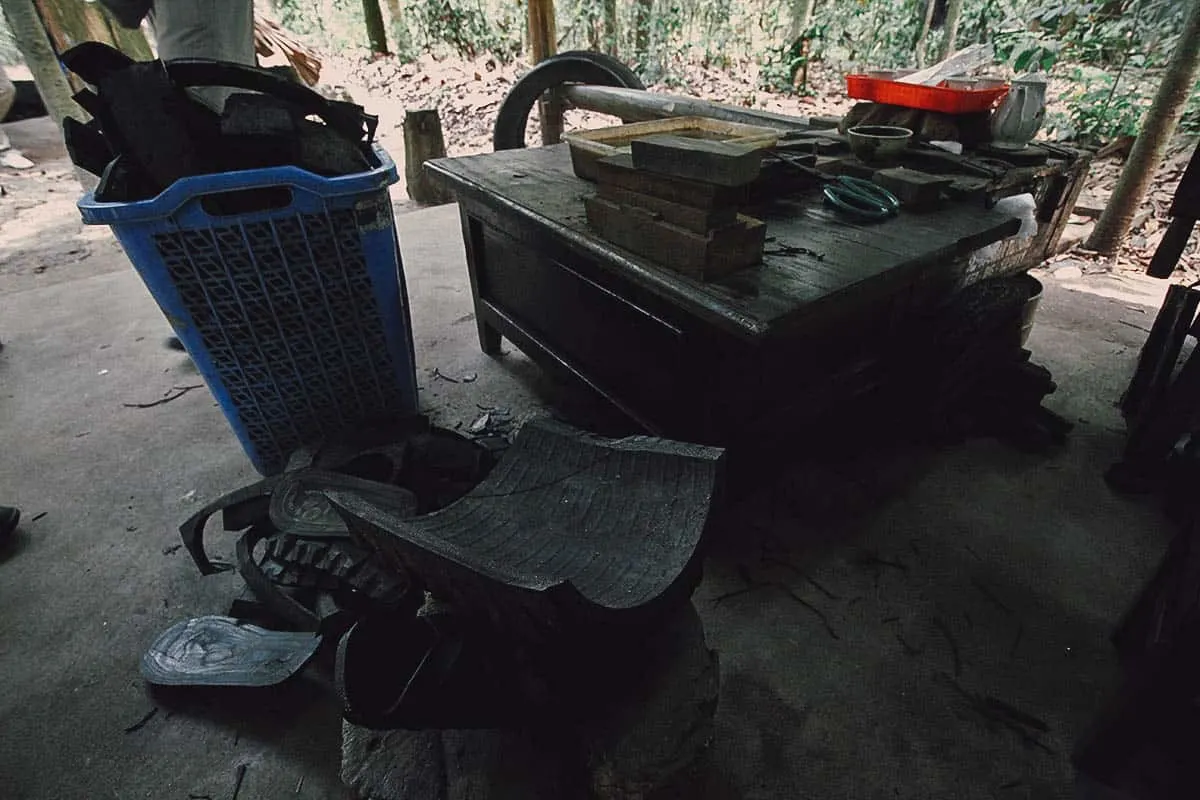
At the end of our tour, we were treated to a snack of tapioca root and pandan tea. This basic Vietnamese food staple formed a large part of the Viet Cong’s diet during the war.
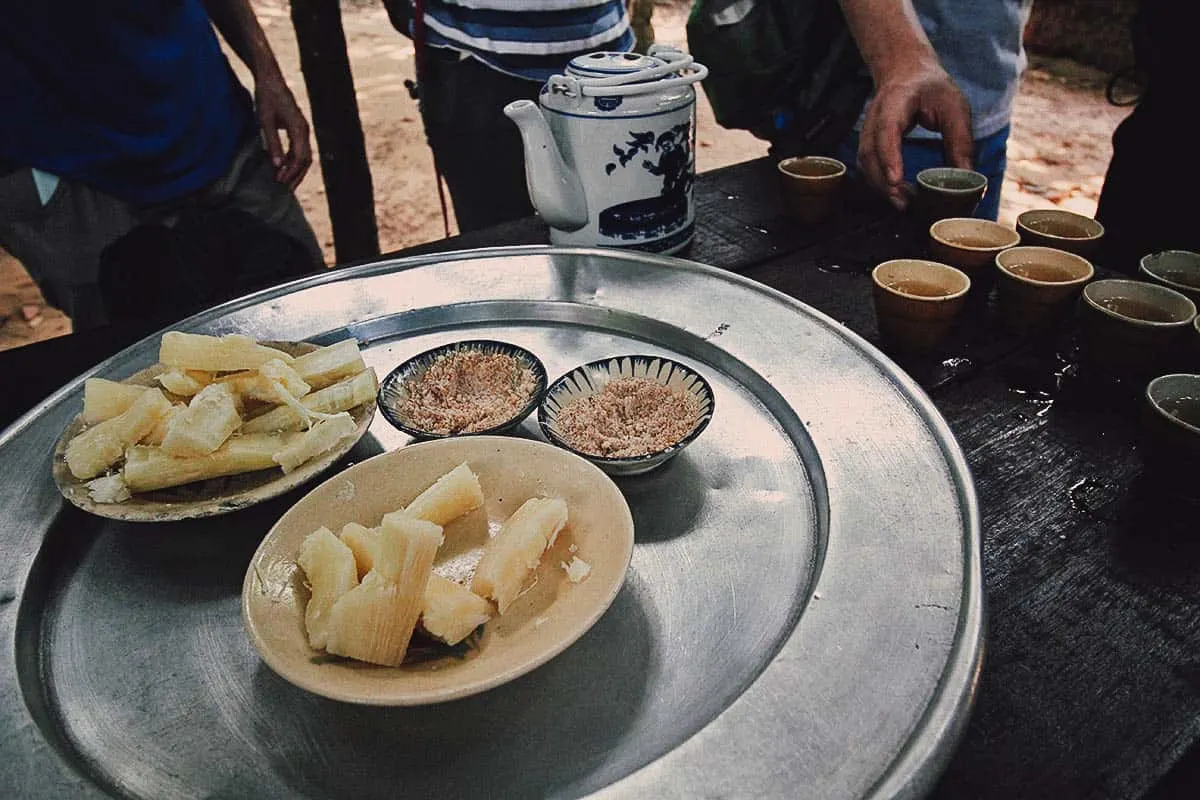
The tapioca root was served with a side of crushed peanuts and sugar. I thought it was pretty good.
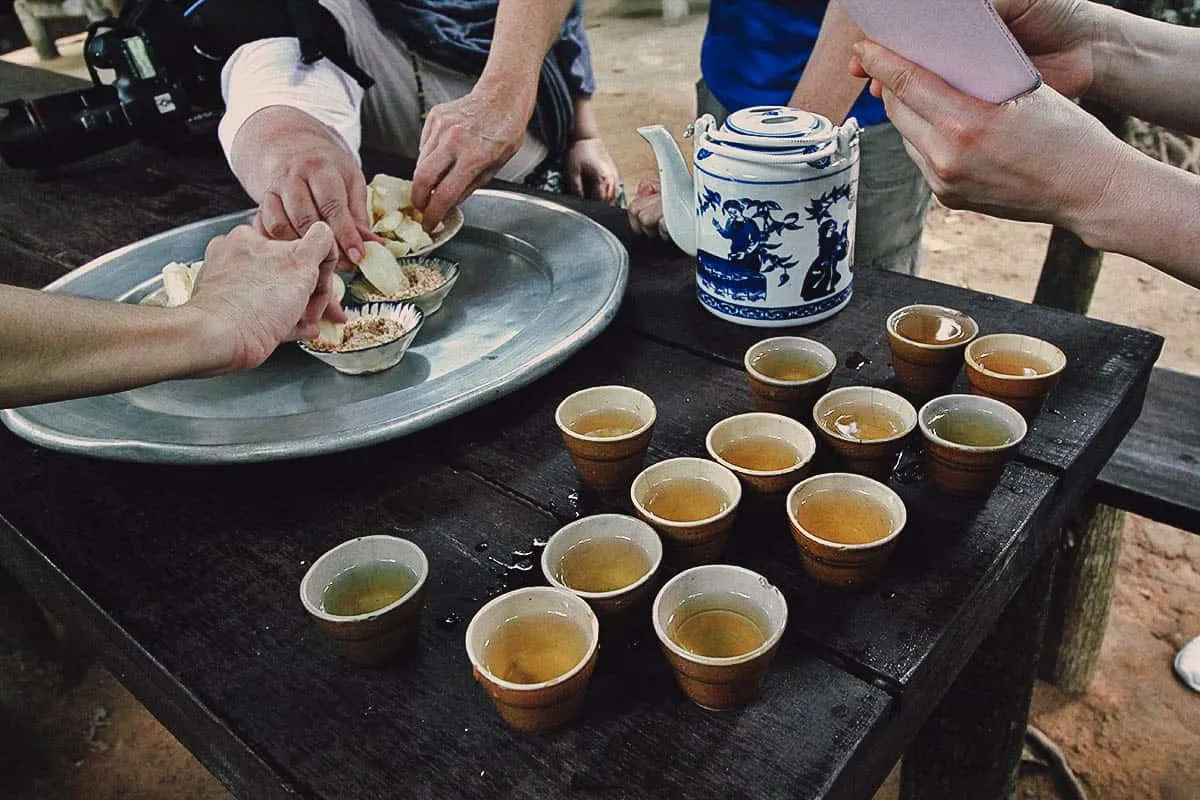
Here’s what raw tapioca root and pandan leaves look like. Huy said that the older generation of Vietnamese who survived the war no longer touch the stuff. After this, we made our way out of the jungle and drove back to Saigon.
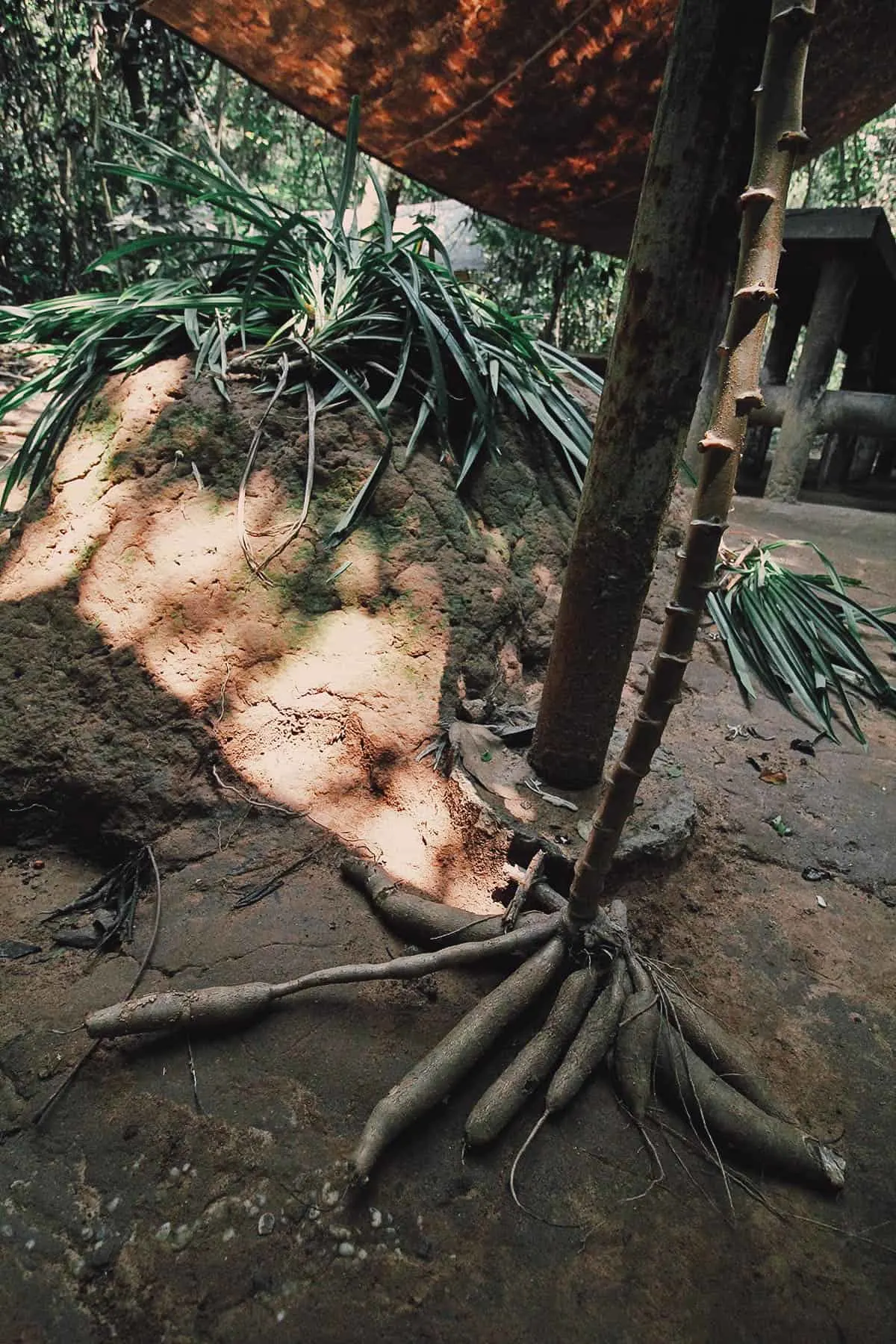
Agent Orange
I’m time traveling a bit here. We stopped at this handicraft center on the way to Cu Chi District. All the workers here are victims of Agent Orange employed by the government to produce intricate eggshell inlay artworks. I don’t know how it works exactly but it was nice to see programs like this in place.
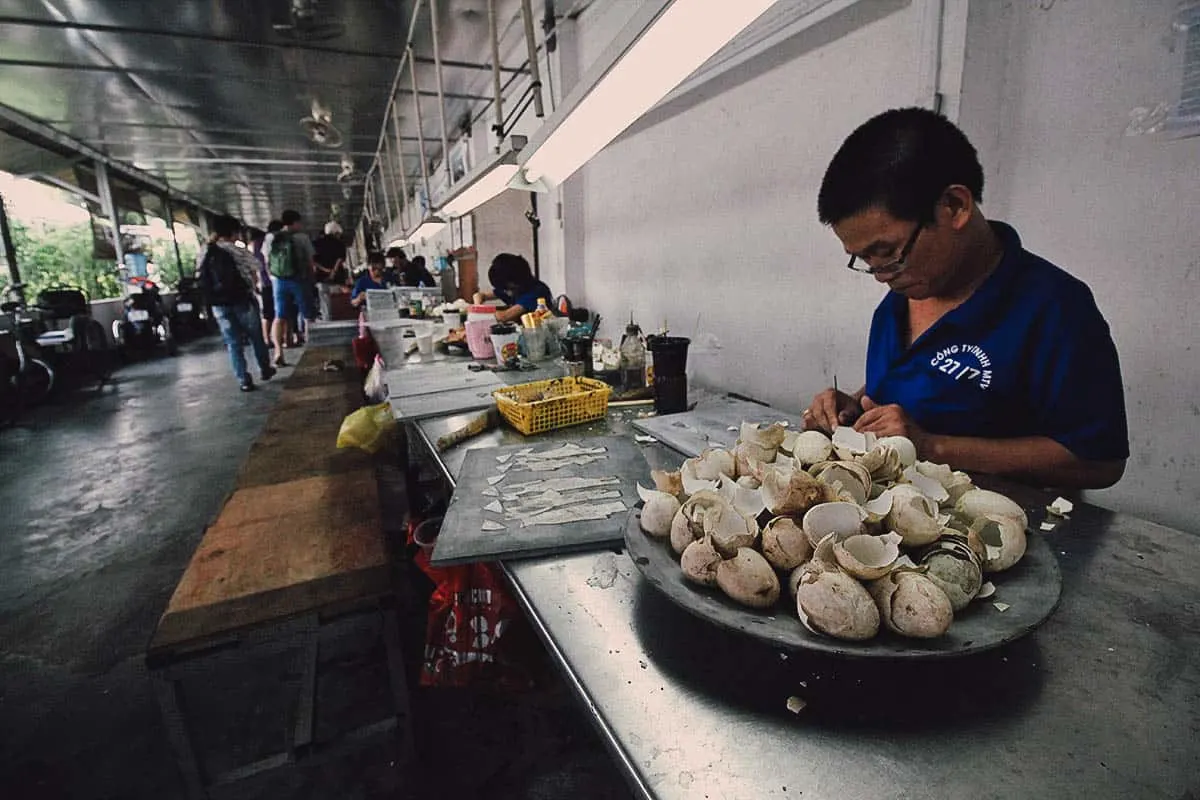
These special wheelchairs were created for the victims of Agent Orange. Many were born with birth defects and have little use of their legs, hence the invention of these specially designed wheelchairs that allow them to get around using only their arms. They push the steering wheel back and forth to propel the wheelchair forward. If you’d like to know more about the harrowing effects of Agent Orange and the Vietnam War, then you may want to visit the War Remnants Museum in Ho Chi Minh City.
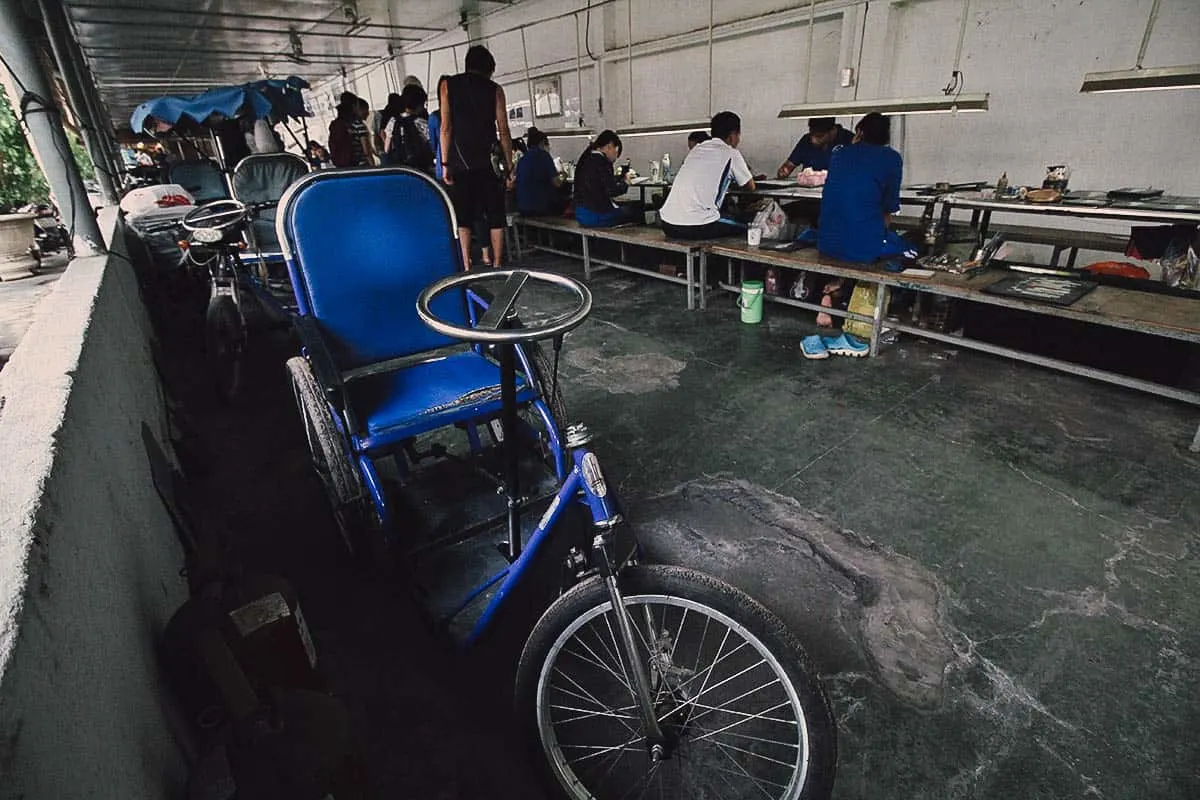
An example of the eggshell inlay art pieces. Originally from China, pieces of duck eggshell are carefully laid out and glued onto a base to create the desired image. Multiple layers of lacquer are then applied before being finished with purified beeswax polished to a high gloss.
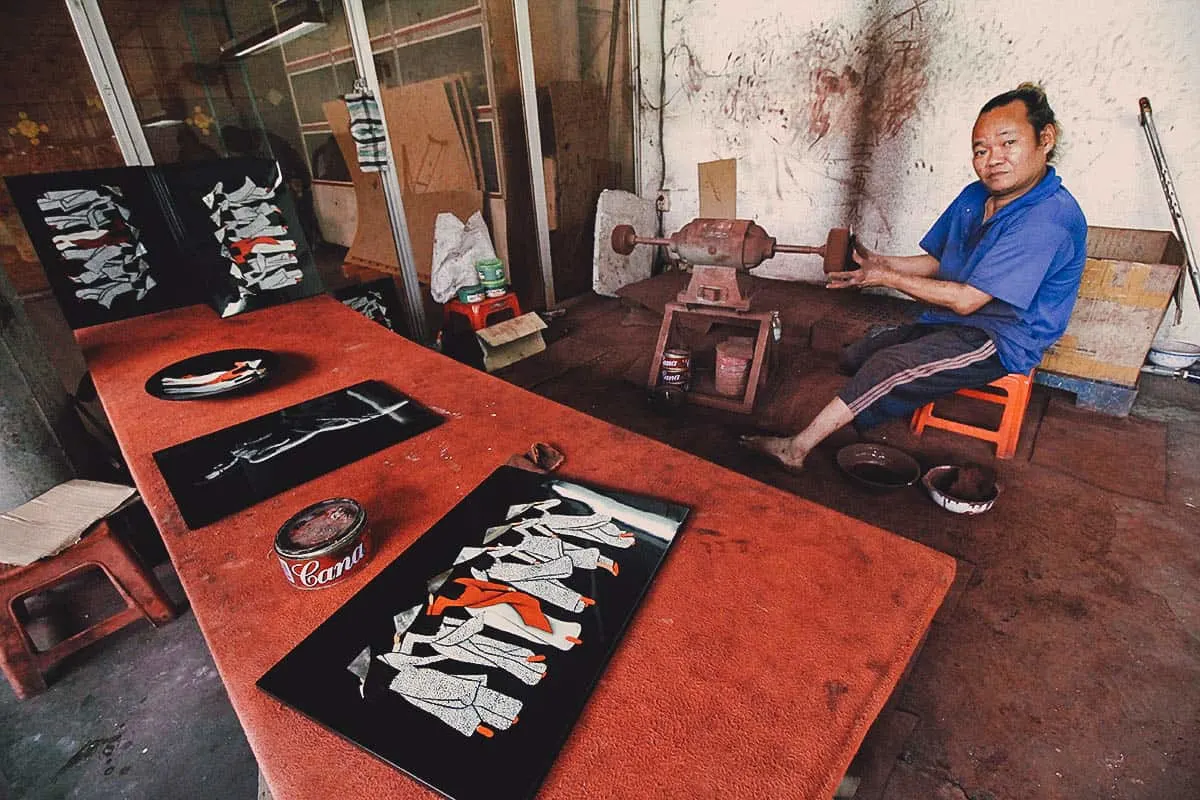
And the roaches? As previously described, you won’t find any roaches in the tunnels anymore. From what I understand, they’ve even made them wider to make it easier for tourists to crawl through. You enter at one end and have the option of crawling a few meters and getting out at any of the first few exits. But if you like being on your hands and knees, then you can crawl all the way until the opposite end. 😆 It was too tight to bring my DSLR but I did have a GoPro strapped to my forehead. I’ll post videos of the experience soon.
You’ll have plenty to choose from on Get Your Guide alone but you can try other websites like Klook as well. These tours vary so try to find one that best suits you.
Many people find the Cu Chi Tunnels touristy and I would tend to agree. But guess what? So’s the Eiffel Tower, but you wouldn’t go to Paris for the first time ever and not go right? Unless you’re claustrophobic, I suggest going on this tour. The Vietnam War was one of the most prominent events of the 20th century and crawling through these Cu Chi Tunnels is a unique experience that you can’t have just anywhere in the world.


Carl Kruse
Wednesday 12th of July 2017
The tunnels have been on my bucket list way before they were popular. Thanks for the great expose!
Carl
JB & Renée
Wednesday 12th of July 2017
You're welcome Carl. Hope you find your way there soon. :)